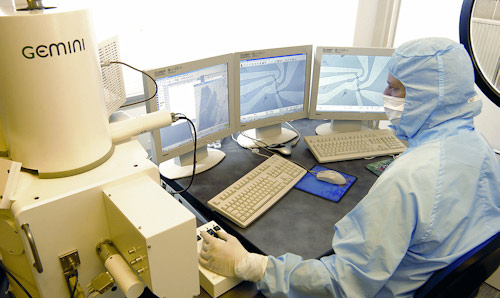Mesoscience and nanotechnology workshop
We host a multi-million pound nanoworkshop as part of the Manchester Centre for Mesoscience and Nanotechnology.

It was in this facility that graphene was first discovered, leading to the 2010 Nobel Prize for Physics for Andre Geim and Konstantin Novoselov.
The nanoworkshop has extensive facilities that allow researchers to fabricate, visualise and characterise structures and devices containing individual elements from a few microns down to 10 nm in size. The facility is specially designed for advanced multidisciplinary research such that researchers with little previous experience in nanotechnology could use it to join and collaborate with those already active and experienced in the subject.
The facility boasts a suite of Class 100 to Class 1000 clean-rooms and has become a 24/7 facility as a result of continuing investment, including upgrades and additional equipment for a wide-range of capabilities. This flexible set-up perfectly suits the niche area in nanotechnology, which lies between the so-called 'bottom-up' and 'top-down' approaches and remains probably the least explored, yet most close to possible applications.
The facility was opened by Lord Sainsbury in 2003, with funding from a SRIF (HEFCE) award and significant investment from the University, EPSRC and The Wolfson Foundation. Further funding was secured in 2008 from the £5.3 million EPSRC Science and Innovation award.
